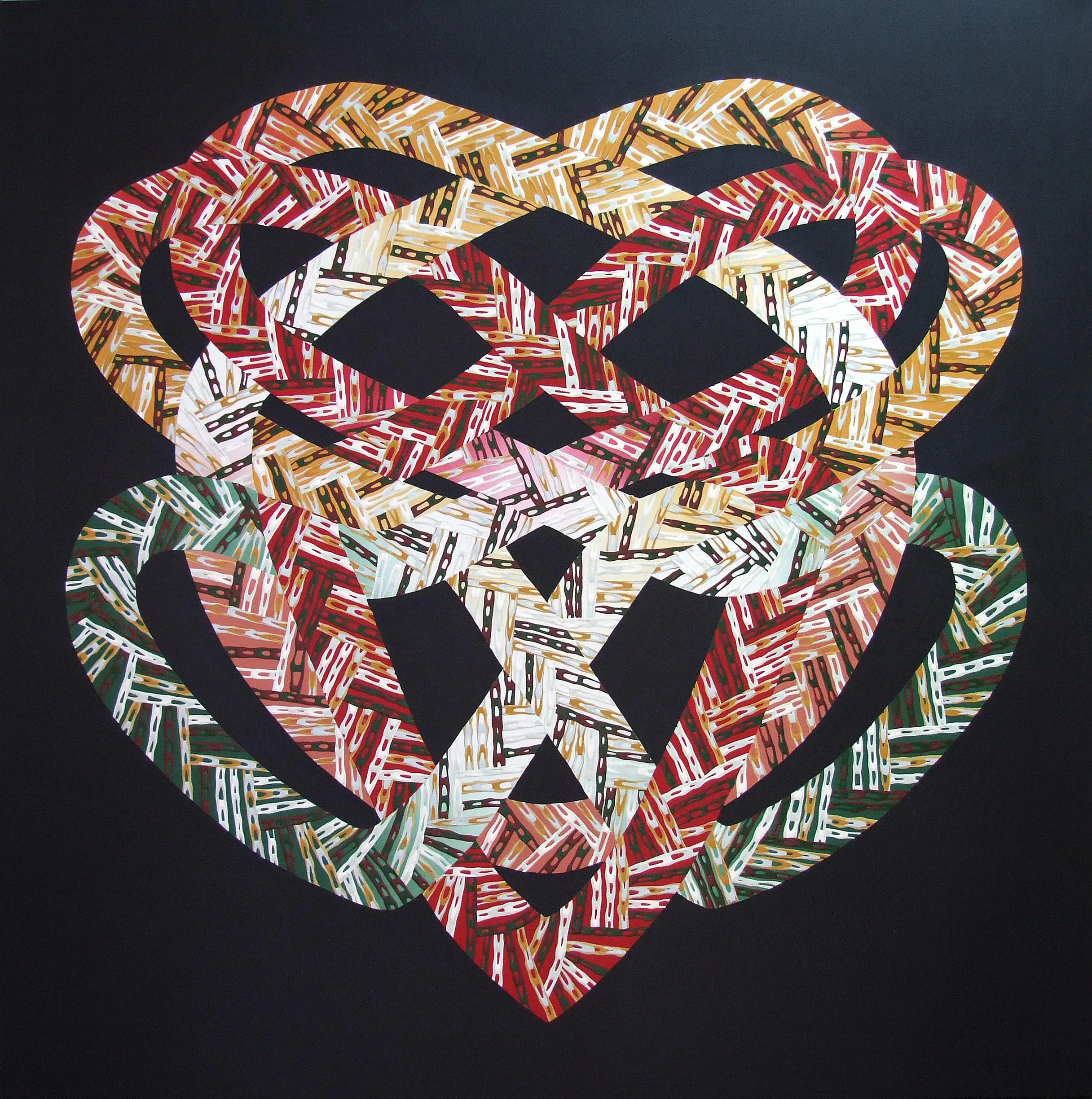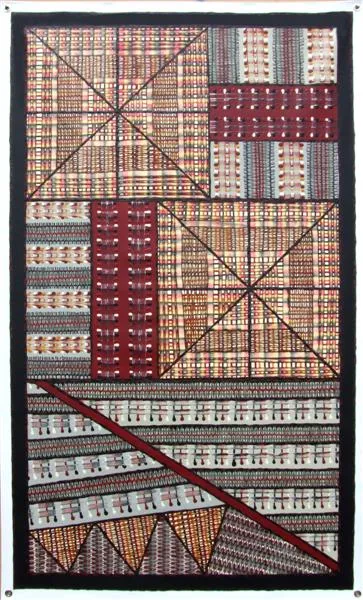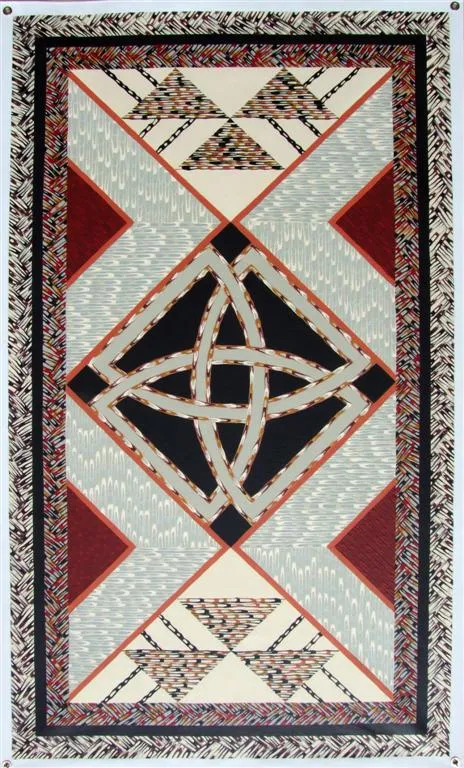Review: kNot Pasifika

Rosalie Jurczenko reviews an exhibition of cross-cultural paintings by Morag Stokes, currently showing at Pataka Museum of Arts and Cultures. The show merges Celtic and Maori/Pacific Island art forms using Morag's distinctive 'drag painting' process.
Closing celebration and artist's floor talk is at 1pm on Sunday 20 February 2011 at Pataka.
* * *
We are in a unique position in multi-cultural New Zealand whereby distinctive cultures from opposite sides of the globe co-exist, blend, influence and form the basis of future innovation within the creative visual fields. The idea that tradition is stagnant is blown away as we witness improvisation across the board, according to place, time and circumstances or changes as new materials and techniques are developed.
As a Scottish immigrant to New Zealand, and resident here for 10 years, artist Morag Stokes has created her own distinctive process of working with acrylic paint, which she describes as drag painting. This unique method creates bands on glass, that can be either physically woven or collaged into a work, building up a surface that can also recall ancient or traditional working methods inherent in seemingly opposite cultural spectra; the Celtic and the Maori/ Polynesian.
In this exhibition the ambiguity that lies behind her sense of what is 'home' is played out with a tight blending of Celtic knots fused with the Maori Tiki and Pacific Tapa motifs. However, this same process has its limitations and has dictated the direction of the work, as tight curvilinear forms such as spirals or koru cannot be attained, despite their strong cross-cultural connection.
The notion lying behind the Celtic mythology of shape shifting, the uncertainty or surety of understanding of what one actually perceives to be seeing, comes into play, underpinning the constant presence of 'otherness'. This is evident in kNot Tiki 4, with it's Celtic knot design expanded sideways and its sharp points softened. Morphing into a Tiki head, the facial delineations are not as distinct as in kNot Tiki 5, which has flared lips and firmly positioned eye sockets. kNot Tiki 4 is placed on a flat black background, the tartan like weave, colours and built up textures highlight the process of weaving, which in itself is a signifying and unifying cultural factor. Here we encounter shifts in the figure and ground and like a Celtic knot, cannot put our finger on the beginning or end as they both occupy the same space.
The context of how or where it is hung ( in this case, Pataka) or the viewer's experience comes into play, reinforcing the idea of spatial change and pictorial shifting from abstract designs to the figurative and back again.
The characteristic weaving of bands in kNot Pasifika 1,2 and 3 within a square format encompasses not only an image of the four petalled Pasifika motif but also a tartan effect. Morag has been inspired by the colours used in the historical 19th century Maori meeting houses throughout this show.
Bringing together strong lines with soft ones, a hint of tartan within geometric grids, kNot Tapa 4, on unstretched canvas, is inspired by Fijian masi cloth. Compartmentalization also recalls the divisions in Samoan saipo or Niuen haipo whereby areas are filled with texture suggestive of crosshatching & plaid.
Visual ambiguity and visual representation underpins the idea of Celtic shape shifting, of moving between worlds. It is a case of here one minute, gone the next, depending on how you look at it with plant forms shifting into animal or human faces. Morag successfully transforms these paintings into works that sit well with our Pacific/ Maori context and that of her Celtic origins. However, most intriguing, is her innovative process that creates the fusion of both. This in itself becomes a focal point and due to its uniqueness, raises it’s own set of questions in cultural blending or adaptations that can reach back into our settler history and the points of contact between peoples and their material cultures.
- Rosalie Jurczenko, February 2011
kNot Pasifika
PATAKA Blue Pacific Gallery, 22 Jan - 20 Feb 2011

